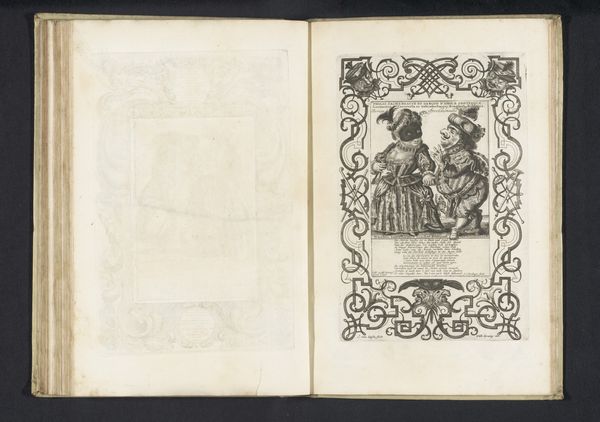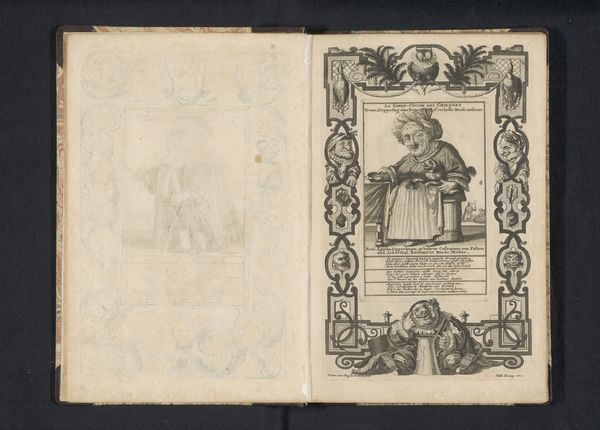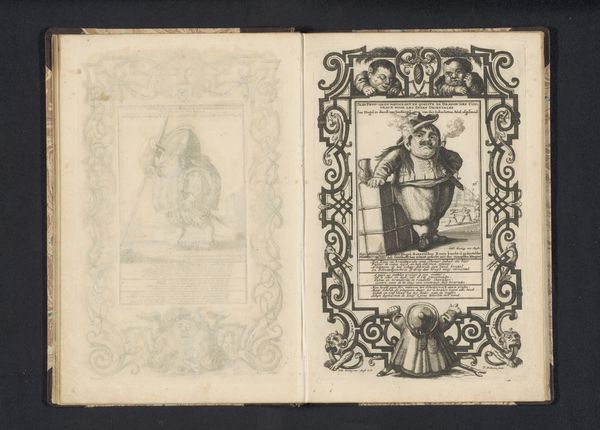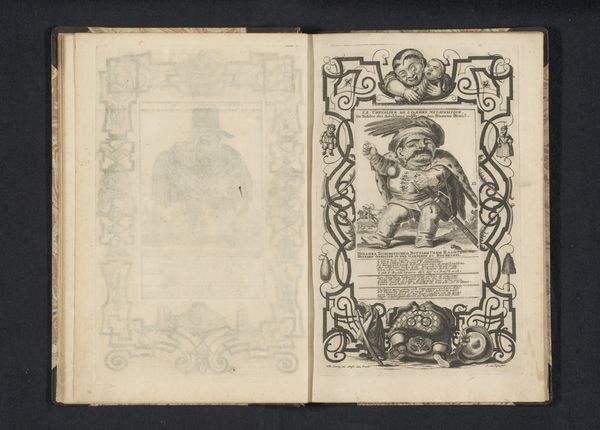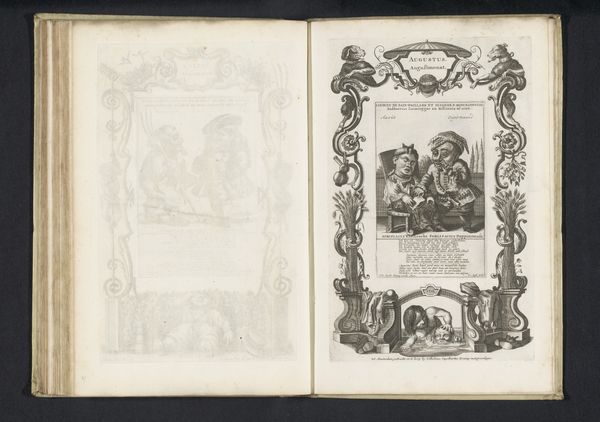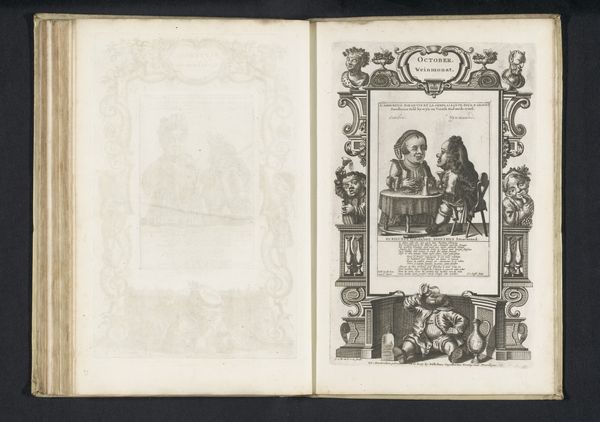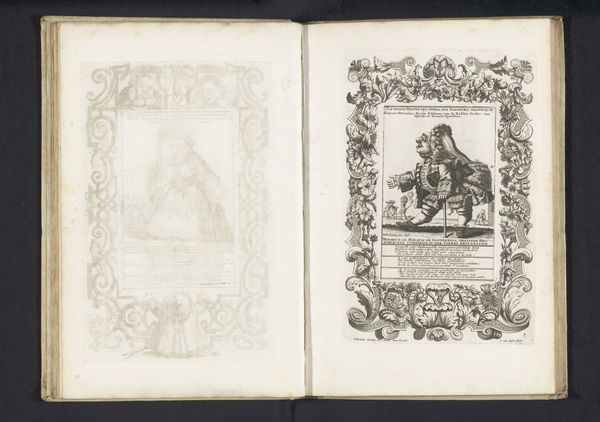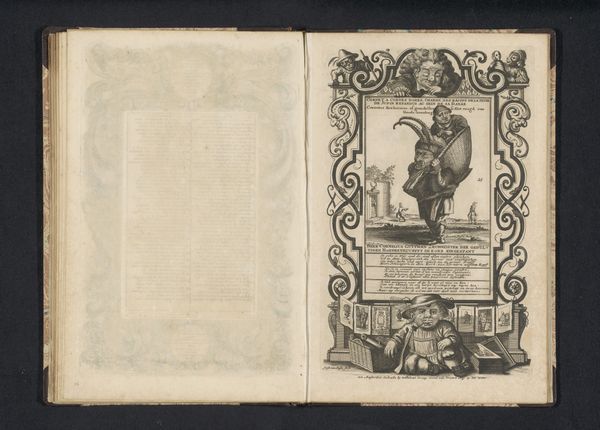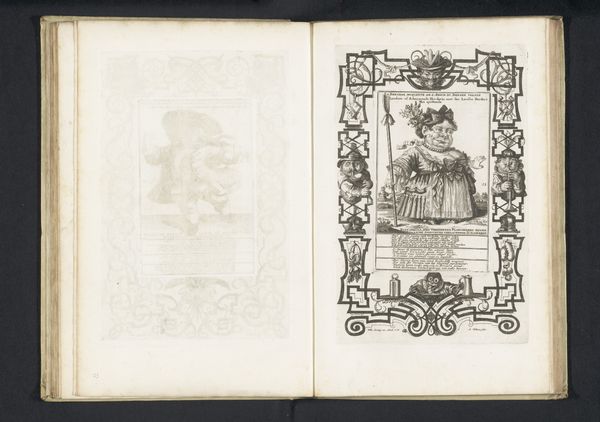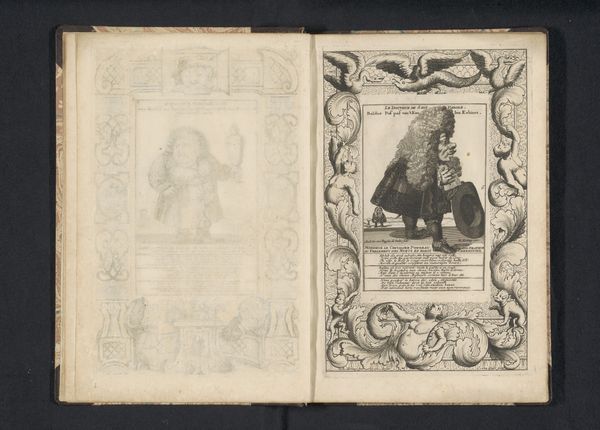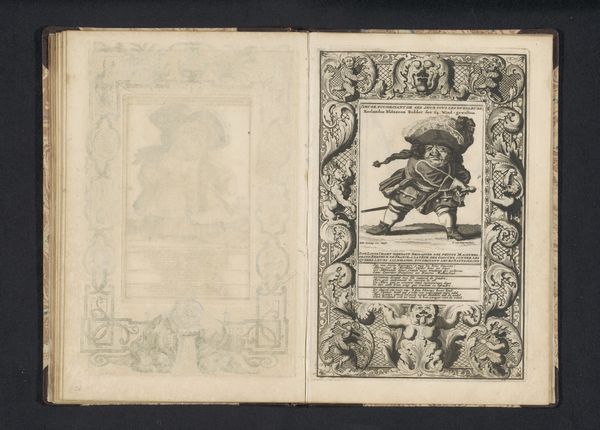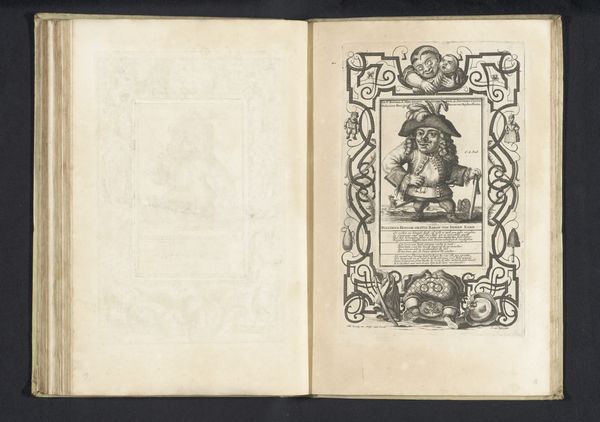
print, paper, engraving
#
portrait
#
baroque
# print
#
caricature
#
paper
#
coloured pencil
#
engraving
Dimensions: height 160 mm, width 105 mm, height 275 mm, width 172 mm
Copyright: Rijks Museum: Open Domain
Curator: This engraving from 1716, titled "De dwerg Potjerollia van Mestenburg," presents a caricature by Joost van Sassen. It is fascinating how the print medium itself serves to disseminate this satirical image. What are your immediate impressions? Editor: A strange combination of festive and grotesque. The central figure, this "dwarf," is surrounded by garlands and floral motifs, but his exaggerated features—particularly the nose—and the sheer oddness of his presentation create a feeling of unsettling revelry. The owl is staring! Curator: Precisely. The figure likely represents a target of social critique. Dwarfs were often figures of ridicule or court jesters. Van Sassen perhaps critiques societal hierarchies or specific individuals through this exaggerated portrayal. It seems it had strong roots within courtly burlesque. Editor: That’s what I'm curious about. This small man with an aristocratic air and adornments - the headdress and fur coat for example - presents conflicting messages of power and diminished status. Are those supposed to be scepter-like flowers he's smelling? They look ridiculous! And what about that dark void right behind him? Curator: The details amplify the mockery. The engraving functions within a broader historical context of political and social satire circulated via prints. It’s hard to say exactly whom he might represent. But, notice how text accompanies the caricature within the framed design? Editor: Yes, almost like captions in a comic, underscoring particular characteristics or insinuating scandalous rumours. There's a symbolic depth here, that extends beyond a simple gag. What message can the common man glean from an ugly nobleman? Curator: I find the contrast between the ornate baroque frame and the subject within is really at the heart of the engraving. It seems to amplify the social critique implicit in representing the nobility and elites in such a ridiculous, even demeaning manner for public consumption. Editor: I wonder, what emotional residue did this image leave on viewers then and what feeling has it continued to echo across history and the cultural psyche? Does its message continue to influence society or do people look at the man as merely an absurd buffoon? Curator: Images like this contributed to shaping public opinion and discourses of power in early modern Europe. What Van Sassen managed to engrave here gives modern scholars the unique possibility to investigate the visual polemics of the Baroque in a more informed way. Editor: Indeed, a small image, but an interesting opening into a world of courtly spectacle, status and the power of images in shaping historical perspective.
Comments
No comments
Be the first to comment and join the conversation on the ultimate creative platform.
